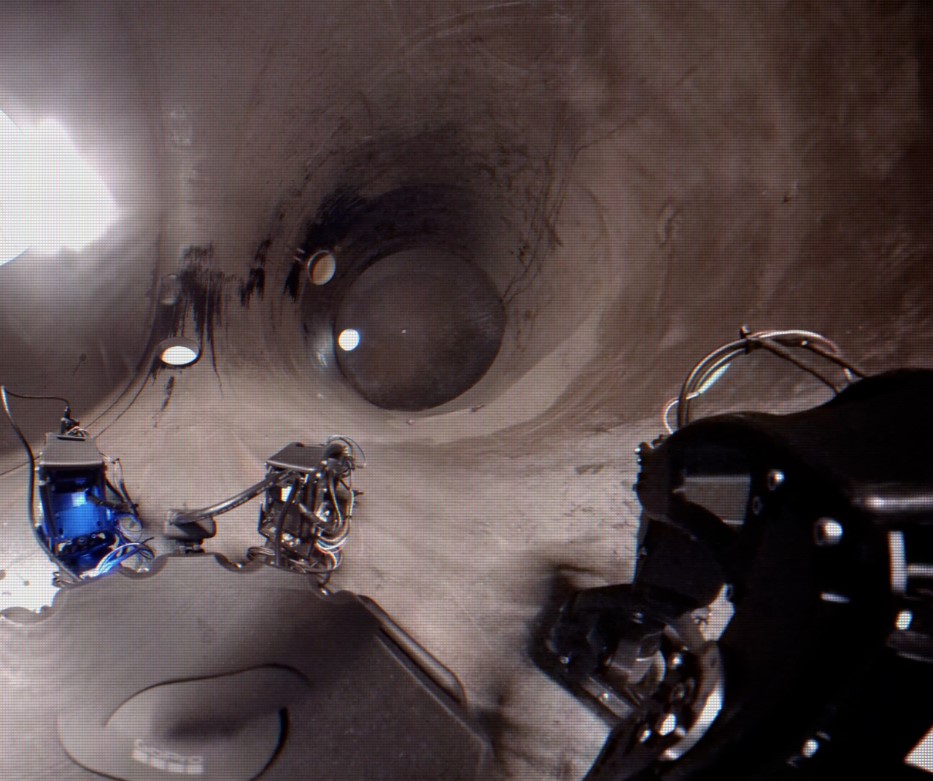Which Pipe Inspection Equipment Should I Use?

With a dizzying array of pipe inspection equipment on the market, it’s become a complex maze to navigate. Different options abound, from camera choice to testing platforms, and finding the right solution can be challenging.
New technology is constantly coming to market and it can be time-consuming to keep up. However, rather than settling for traditional kit or taking advice from a single manufacturer who states that their all-singing, all-dancing new kit will solve all your pipe inspection woes, it’s worth defining exactly what advantages you need.
Reaching the Unreachable: What Do You Need From Your Pipe Inspection Equipment?
No matter whether you’re a maintenance engineer on an oil & gas rig, a plumber, a contractor or whatever, you’ll have specific requirements for the job in hand. However, most pipe inspections have a few aspects in common:
- Pipe inspection involves difficult-to-reach areas
- Pipes are likely to have different diameters
- The pipes might be constructed from a variety of materials
- Different inspection techniques will be needed
- The pipes might carry substances hazardous to health
- Simplified data capture is essential
- The kit used should be tough, robust, durable and easy to maintain
The above requirements present quite some challenges. Inspection tasks are seldom the same, meaning that an additional ask should be that a chosen inspection platform should be able to carry out multiple types of testing.
Pipe inspection usually involves tight spaces – ones that are difficult to access and might extend along considerable distances. Today’s new breed of remote testing robots can effectively remove both of these challenges.
The Magneto – A Fine Example of an Inspection Robot
One example is Magneto, a next-generation, smart, modular payload platform with universal device interfaces that provide a variety of inspection and NDT payloads.
Examples of specific testing sensors that the robot can carry include:
- Tactile sensors
- Visual sensors (Cameras)
- Thermal imaging
- LIDAR
- Hall-effect sensors (MFL)
- Magnetoelectric sensors (MPI)
- Gas flow proportional detector (XRF)
- Scintillation detector (XRF)
- Circumferential multi-circuit permanent magnet exciter (CMPME) – Wire Rope Testing
- Phased array probe – scanning for FAC
- gPIMS
- sensor ultrasonic sensor (UT)
- Hardness Sensor (HT)
- Dew point sensors
- Thickness sensors
Thanks to the ability to customise Magnet according to requirements (simply bolt on the required testing technology), along with remote operation, this single platform can be utilised for virtually any type of NDT pipe inspection. Furthermore, the collaboration of data is presented in different categories, depending on the sensors.
These include:
- Visual
- Strength-based
- Sonic/ultrasonic
- Magnetic
- Electrical
- Thermography
- Radar
- Radiography
- Endoscopy
Other Considerations
Whether your chosen platform is Magneto or another, it’s essential to consider other crucial components. For instance, camera inspection demands the best quality images possible. Therefore, you’ll need the largest camera head/LED lighting possible. No matter what the environment, the equipment should be water and dustproof. All elements of the apparatus – from the inspection platform to cameras and push rods – should be manufactured from lightweight, high-quality, durable materials.
Other attributes include:
- Controllers should be intuitive and simple to use
- Files should save to multiple formats and be easy to export
- Adding data during the inspection should be possible – many come with an attached or wireless/Bluetooth keyboard to allow inspectors to make dynamic notes
- Screens should provide clear, HD images or better
- The equipment should be future proof. Technology advances fast, meaning the ability to upgrade is essential
Finally, whichever pipe inspection equipment you choose, it’s essential that It’s easy to keep clean. One of the biggest reasons for poor pipe inspection results is down to a lack of maintenance. These tasks should take place both after use and before the next one. This will help ensure that the equipment performs as expected and returns the required high-clarity data.
Contact us to find out more about any of our inspection equipment, or request a quote online.
You might also find this useful: How Inspection Cameras Are Changing the Way Plumbing Is Done
